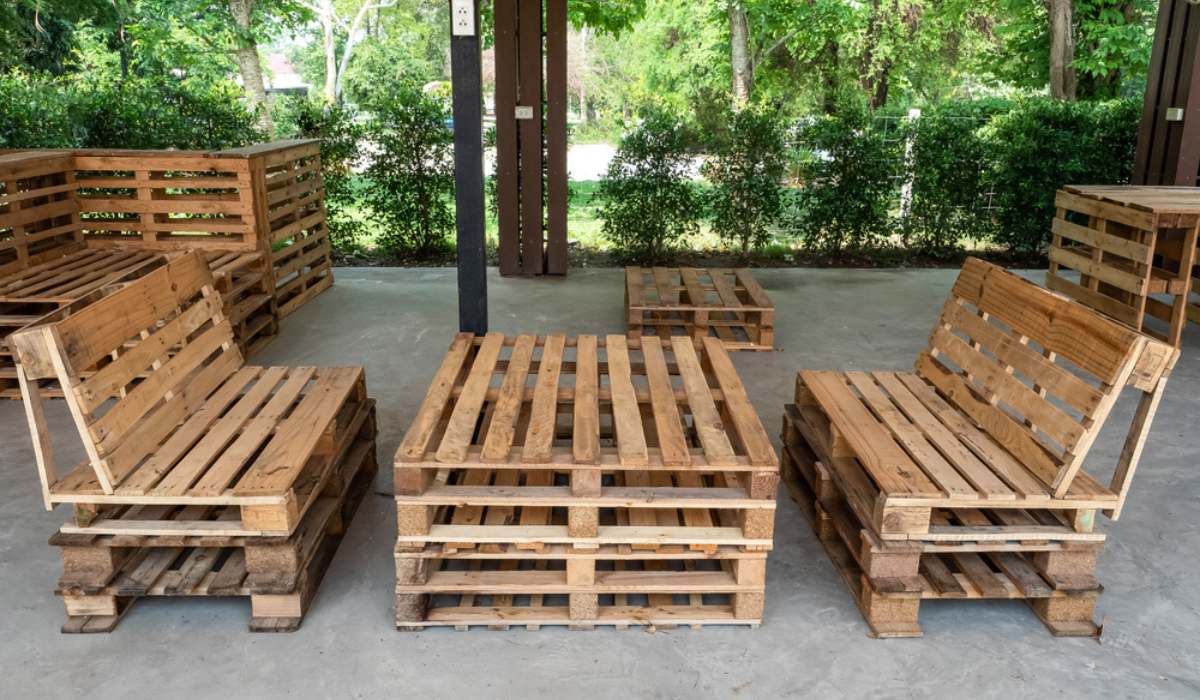Key Takeaways
- Discover the benefits of repurposing furniture to minimize environmental impact.
- Learn practical DIY ideas that can turn old furniture into valuable pieces.
- Understand the trends and benefits of furniture upcycling in today’s sustainable world.
- Explore real-life examples to ignite creativity and prompt innovative thinking.
The Beauty of Giving Furniture a Second Life
With increasing environmental awareness, repurposing furniture has become a widespread and meaningful practice. This approach allows individuals to channel their creativity while contributing to environmental preservation. Repurposing gives furniture items a renewed purpose and beauty, enhancing home décor uniquely. Many find emotional rewards in seeing their creations come to life while, at the same time, they keep valuable materials out of landfills.
Inspired by the pressing need to combat climate change, this movement provides environmental solutions by conserving resources and reducing waste. Whether refurbishing an old dresser or reconfiguring a tired sofa, every effort to recycle furniture influences the broader goal of sustainable living. Across various living environments—from rural homes to urban apartments—repurposed furniture adds personalized charm and tells a dynamic story about the residents. Embracing this practice aligns personal values with larger ecological goals, showcasing a profound commitment to a more sustainable future.
DIY Ideas for Crafting Functional Pieces
Bookshelf Turns into a Bar
Transforming a bookshelf into a bar is an example of creativity meeting functionality. With a few coats of vibrant paint and some well-placed shelves for glassware, a neglected bookshelf can become the highlight of any social gathering area. For items that are beyond reuse, proper facilities can efficiently haul off furniture to ensure sustainable disposal. Attaching a wine glass rack underneath adds an elegant touch, making it both an inviting and practical home element. Reimagining a bookshelf this way saves money on purchasing new furniture and provides a personal fulfillment that mass-produced items never could. Furthermore, showcasing such a unique piece can enhance the aesthetic appeal of your home, turning conversations towards your innovative efforts and inspiring others.
Cabinet to Kitchen Island
Old cabinets don’t have to languish in disuse; with ingenuity, they can become charming kitchen islands that serve diverse purposes. Fitting the cabinet with wheels makes it possible to move it around as needed, creating additional workspace or serving area. Adding a countertop surface, such as butcher block or granite, integrates beautifully with most kitchen designs. This repurposing enhances kitchen functionality and conserves resources by reusing materials already available at home. The tactile experience of crafting a kitchen island from a humble cabinet can also build practical skills and inspire confidence in tackling future home improvement projects.
Trends in Upcycling and Creative Innovation
Upcycling furniture aligns closely with sustainability trends proliferating across industries today. As activists and eco-conscious individuals spotlight options to reduce waste, converting furniture into trendy pieces gains traction. Social media platforms abound with ideas that foster this creative enterprise, challenging more people to try innovative designs. The movement benefits from support from leading architects and designers who promote sustainable practices, encouraging ethical partnerships and consumer choices. Such initiatives continue to expand, fostering practices that reflect a shift towards a sustainable lifestyle across communities — proving the green movement to be attainable and commendable. These trends focus on aesthetic enhancements and strengthen community engagement and environmental responsibility.
Benefits of Upcycling Furniture
Besides promoting an eco-conscious mindset, upcycling teaches problem-solving and resource management. It offers financial savings by reducing the need for new purchases while increasing the aesthetic value of one’s home. Through upcycling, furniture once deemed unworthy finds new life and purpose, making each piece distinct and energetic. Besides, it inherently encourages reducing the carbon footprint and advocating for a circular economy—an essential step towards a sustainable planet. The ripple effect of such practices extends beyond individual households, resonating with community efforts aimed at sustainable living. Embracing upcycling is a commitment to refinement and consideration, illustrating a growing desire to innovate sustainably.
Real-Life Examples of Fantastic Furniture Transformations
Legends of furniture transformations abound, ranging from imaginative to simply ingenious. For instance, imagine an aged, rickety dresser—destined perhaps for the landfill—that instead blooms into a vibrant planter box, enveloped by lush flora. In another case, a set of mismatched chairs might merge to form a quirky yet charming bench, reflecting its creator’s unique style and ingenuity. These transformations are not just about repurposing; they are celebrations of creativity and vision, demonstrating how old items can take on new life and bring artfulness to everyday settings. As more individuals share their success stories online, the momentum grows, expanding the community and encouraging newcomers to share in the artistry of furniture repurposing.
Practical Tips for Beginners
Beginning your journey in furniture repurposing can be intimidating yet extremely rewarding. However, the challenges can be easily overcome with a practical approach and the right tools.
- Start with manageable projects like repainting or simple reupholstering to gradually build your confidence.
- Equip yourself with essential tools such as sandpaper, a drill, screws, and other repair materials, ensuring all setups and executions are smooth.
- Engage with online upcycling communities to draw inspiration and gain valuable insights into more complex projects; such networks also offer support, shared experiences, and advice to keep you creatively motivated.
New upcyclers should remember that the process is as significant as the outcome. Being patient with oneself during the learning journey yields rewarding results, not just in skills but also in establishing a deeper connection with one’s surroundings.
Conclusion: Join the Creative Revolution
Repurposing old furniture is not merely a hobby but a testament to a green revolution that combines personal creativity and environmental responsibility. Turning waste into wonder allows anyone to impact the planet while celebrating their inventive spirit positively. Embrace the upcycling movement today and give that old furniture a second lease on life, sharing your story and contributing to a healthier, sustainable future. This creative endeavor enriches your living space and acts as a catalyst for change, inspiring others to tread lightly and think innovatively about what transformations their resources can achieve. Ultimately, the message is clear: creativity and sustainability can coexist harmoniously, crafting a future where both can thrive together.







